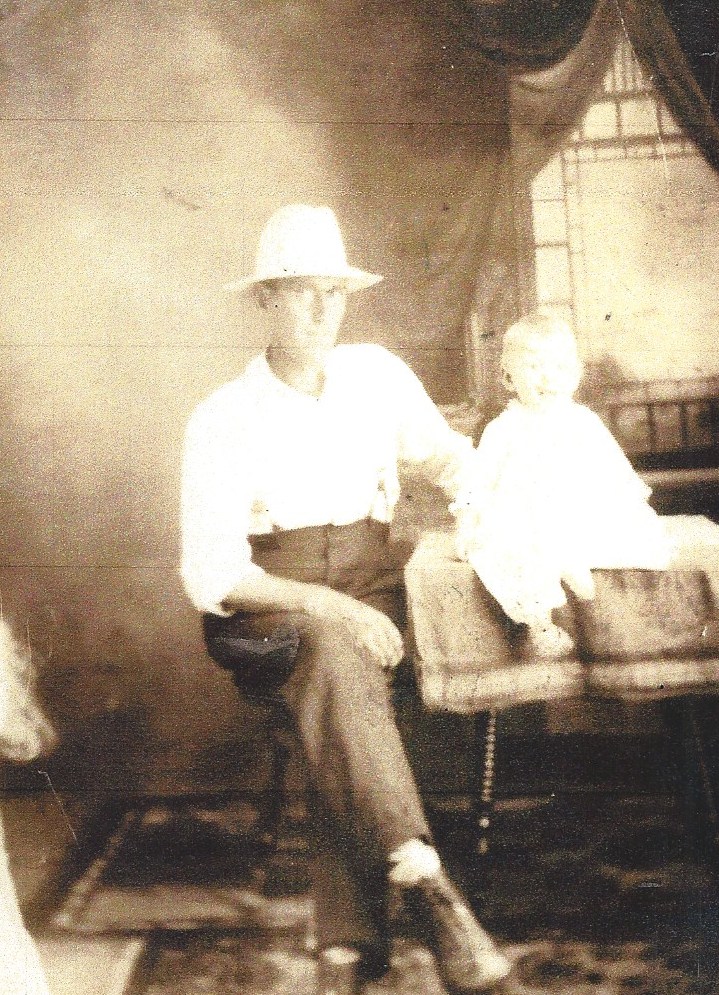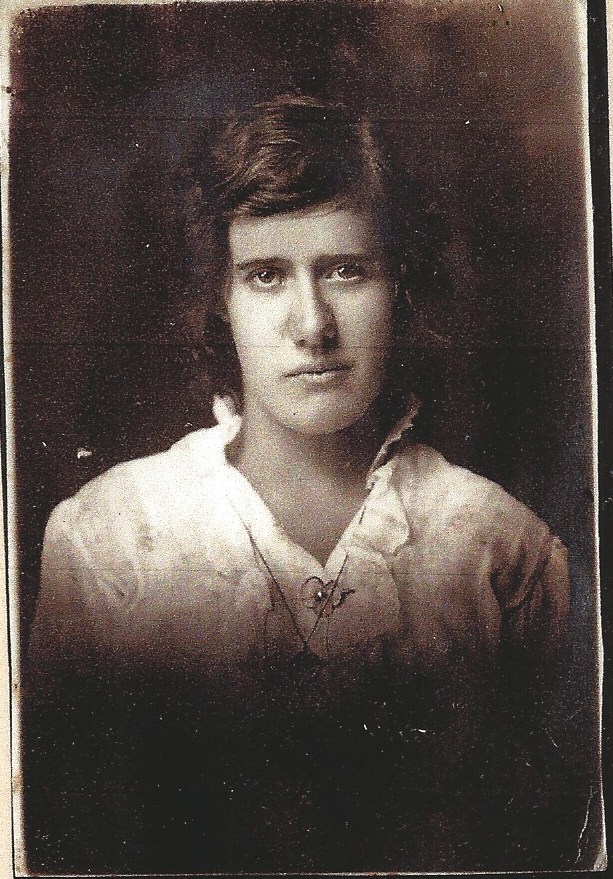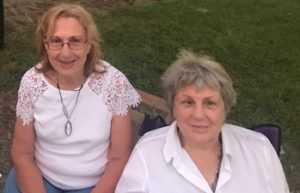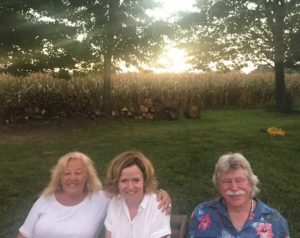Adoption search journeys are not for the faint of heart. Recently, I traveled to southern Indiana for a big family reunion of cousins on my birth mother’s side. Though the cousins are my blood relatives, they were strangers to me.
I’d never been this far south in the Hoosier state. Daviess County, Indiana looked and sounded nothing like the concrete jungles where I’ve lived most of my life. Cornfields, critters, big open skies, winding roads and Amish buggies – that’s what you find in Daviess County. Sirens, car alarms, honking horns, endless construction and millions of vehicles and people rushing around – that’s what I’m used to in Brooklyn.
My birth mother, Lillian, would have felt right at home in this little farm town, just seven miles east of her birthplace.
Far from feeling at home, I felt anxious as I parked the rental car at the Amish hotel in the town of Montgomery. In a few minutes, I would meet blood relatives on Lillian’s side.
I didn’t know what to expect at this family reunion. Growing up with my adoptive parents and sister, Melissa (also adopted), I saw my extended family at weddings, showers, wakes or funerals in the suburbs of Chicago. I loved spending time with my cousins and aunts and craved more time with them. Most of my childhood unfolded at a painfully slow and boring pace – or so it felt – in our bungalow in Gage Park, just Mom, Dad, Melissa and me. I felt isolated and different from my parents.
A Chance to Learn About Family History
As an adoptee wanting to learn about my roots, I was intrigued by the prospect of meeting new blood relatives. I knew the Arvin-Armstrong reunion would be different from anything I’d ever experienced. (In case you’re wondering, the Arvins and Armstrongs are linked by marriage. Somewhere back in time, two Arvin siblings married two Armstrong siblings, blending the families and creating double first cousins along the way. I’m related by blood to the Arvins.)
I had no idea what the vibe would feel like or whether I’d hit it off with my cousins. I wondered if I would feel like an outsider in someone else’s family. Throughout my childhood, I felt like an outsider, which is common for adoptees.
My cousins probably would be curious about me, the adoptee who didn’t find out I was adopted until age 38. People find my story interesting even though they cannot relate to it.
After six years of learning about my biological family and getting acquainted with a few relatives, you’d think I would be an old hand at first meetings with new blood relatives. In 2015, I met my half-sister, Michelle, and her daughter, Chrissy, in Galveston, Texas. In 2017, I bonded with another new half-sister, Stephanie, and niece Rachel, on my home turf in Brooklyn. Earlier this year, I spent a week hanging out with Stephanie in our home state of Illinois. All of those experiences were rewarding (and none of us ran out of things to talk about!)
But unlike a family reunion, those first meetings were small in size. The Arvin-Armstrong family reunion brings dozens of siblings and first cousins together for three days of conversation and meals. The siblings and first cousins have a lifetime of shared history and memories that makes the reunion easy and comfortable. As the newcomer, I would not be so comfortable.
My cousin, Shannon, who invited me to the reunion, put me in contact with Helen, my cousin Jim’s wife. Helen assured me the relatives are friendly and that I’d learn a lot more about my bio family if I made the trip. I could hang out with her and Jim. Ok, that did it. I booked a trip to Indiana.
At the hotel, I spotted a group of people talking outside of the hotel entrance. Are those people my cousins, I wondered as I wheeled my carry-on to the inn’s front door. Helen saw me approach.
Meeting My Blood Relatives, Learning About Ancestors
“Lynne, you made it,” she said, smiling broadly as she reached out to shake my hand. Helen introduced me to Jim, Rod and Lynn and their spouses. Jim, Rod and Lynn are first cousins to one another and second cousins to me. Like me, they traveled from other states for this reunion.
That was the beginning of many more introductions I’d make over three days. The Arvins and Armstrongs welcomed me with warmth and kindness and regaled me with tidbits and stories about our ancestors.
My cousin, Afra, who I met at one of the dinners, knew I wanted to learn more about my maternal family history. An avid genealogist, Afra brought heavy binders containing photos, obituaries and other historical documents. She offered to make copies of any photos I wanted.
Flipping through the pages of a binder, I felt a thrill when we reached the George Arvin section. For years, I’d wondered what my grandfather looked like and now, for the first time, I gazed at photos of George, taken when he was a young man

In the 1920s and ‘30s, George and his wife, Susan Melissa, were a young married couple with lots of kids, a dozen or more. Raising a big family during the Depression must have been difficult for many people. George struggled to hold down a job. Though he made a little money doing various jobs, even raising raccoons for their pelts, George was not a good provider. I’ve heard that he got arrested for stealing a loaf of bread just likeJean Valjean in “Les Miserables.”
My Grandfather: A Black Sheep?
George wasn’t around much. He deserted the family a couple of times, eventually settling in Minnesota where he died. His family in Indiana struggled. Social workers found foster homes for the children. George and Susan divorced.
In the photos, George has a long face and serious expression. In one photo, an adorable baby is perched on a table next to her daddy, George, who wore suspenders and a brimmed hat that covered most of his hair. The little girl was Mary Arvin, who was only 11 when she died.
Afra’s binders contained a slew of photos I’d never seen before. Pictures of my grandmother, Susan, George and Susan’s sons and daughters, George’s siblings, Susan’s sisters, George’s parents, Susan’s parents, all preserved for posterity. These are my ancestors, I thought as I studied the black-and-white images of mostly unsmiling men, women and children.

I felt like I had just hit a genealogical jackpot.
From talking to my cousins, I learned a lot about more distant ancestors. One of my late cousins, Charles, better known by his middle name, Bob, spent three years as a Japanese prisoner of war during World War II. Another cousin named Bob ran unsuccessfully for Indiana Attorney General in 1980. One ancestor sired 19 children with two wives. Some Arvins were Catholic, some were Protestant.
Listening to all the stories and connecting the names with the faces made my head spin. I felt stimulated by the openness.
Daviess and Martin counties are full of graveyards. With my cousin Jim and Helen, I visited Oak Grove Cemetery in Washington, the town where Lillian was born. It was exciting to find Susan Melissa Arvin’s headstone in section D.

In Loogootee, we visited Truelove Cemetery, the final resting place for many of my ancestors including my aunt, Mary C. Arvin, who died at age 11.
Making Memories with My Blood Relatives
The fun started at my cousin Jason’s place near Loogootee. He lives on a big parcel of farmland with persimmon trees, horses, cows and at least one friendly dog. Jason and his family live in the same modest home where his mother, Frannie, and her four siblings grew up. They maintain an equestrian center where local kids come for riding lessons. Jason keep bees and makes and decorates fancy cakes. His two younger children have amassed a huge collection of 4-H trophies, which are on display In the house.
Jason drove us around the property on a golf cart. Riding on the open seat in back, I tightened my grip after we hit a couple of spots hard on the way to see the steers. What if I tumble off this golf cart, I thought, not wanting to make a fool out of myself or mess up my clothes.
Helen sensed my anxiety. “Jim, let Lynne sit in the front with Jason,” Helen told her husband. We switched seats. In the front seat, I could see what was coming along the path.
Some of my cousins traveled from Florida, California, Illinois and Michigan for this reunion, which has been an annual event since the 1960s. On each of the three days, there had to be 35 to 40 or more people who gathered for meals and conversations about family, houses, jobs, pets, genealogy and travel. Politics never came up.



Several times I found myself repeating the story of learning that I was adopted as an adult and searching for my biological parents. My cousins seemed to sympathize and understand my need to uncover the family history that had been hidden from me for most of my life.
I liked the friendly, relaxed vibe. On the last day of the reunion, I hugged and shook hands with my cousins at Whitfield Hall, where we gathered for salads, fried chicken and lots of desserts. Whitfield is in Martin County, next to the St. Martin Catholic Cemetery, where more than 100 Arvins are buried.
I felt satisfied as I traveled back to New York with copies of family photos and historical records packed in my carry-on.
This must be how you make family history, I thought, when you find your blood relatives later in life. I felt closer to my biological roots.
The next time I go to the reunion, I’ll leave the anxiety at home.
